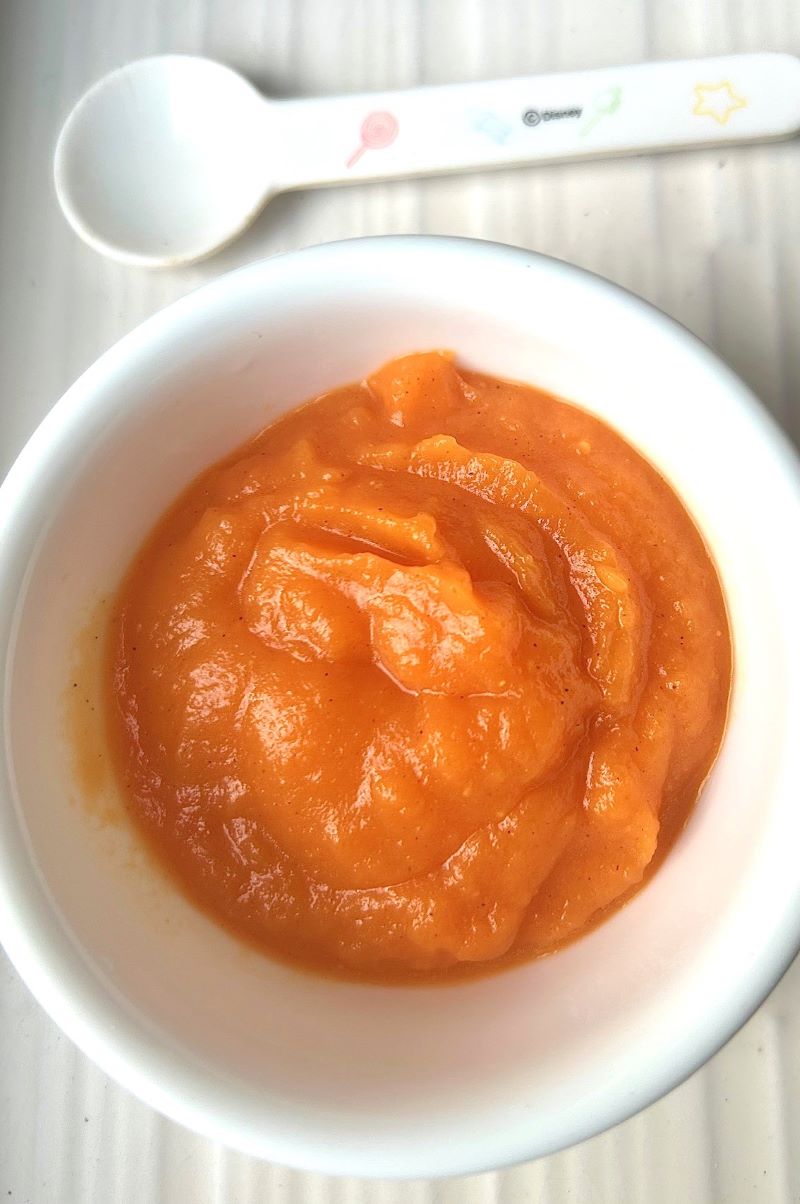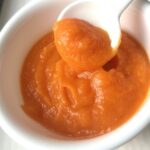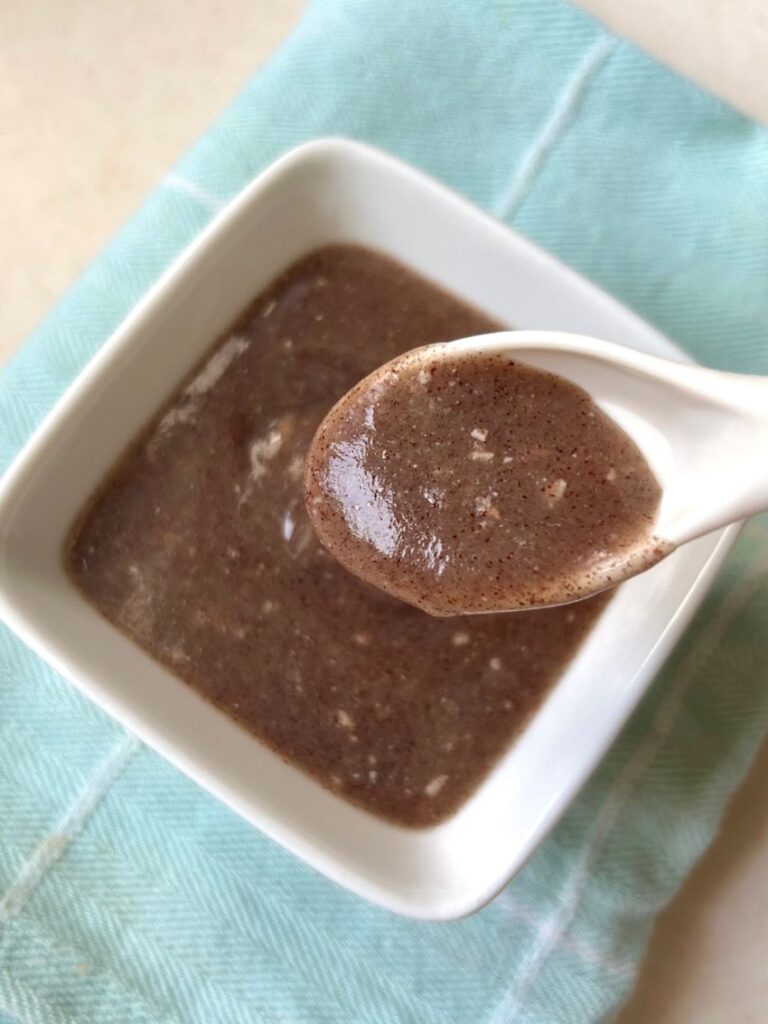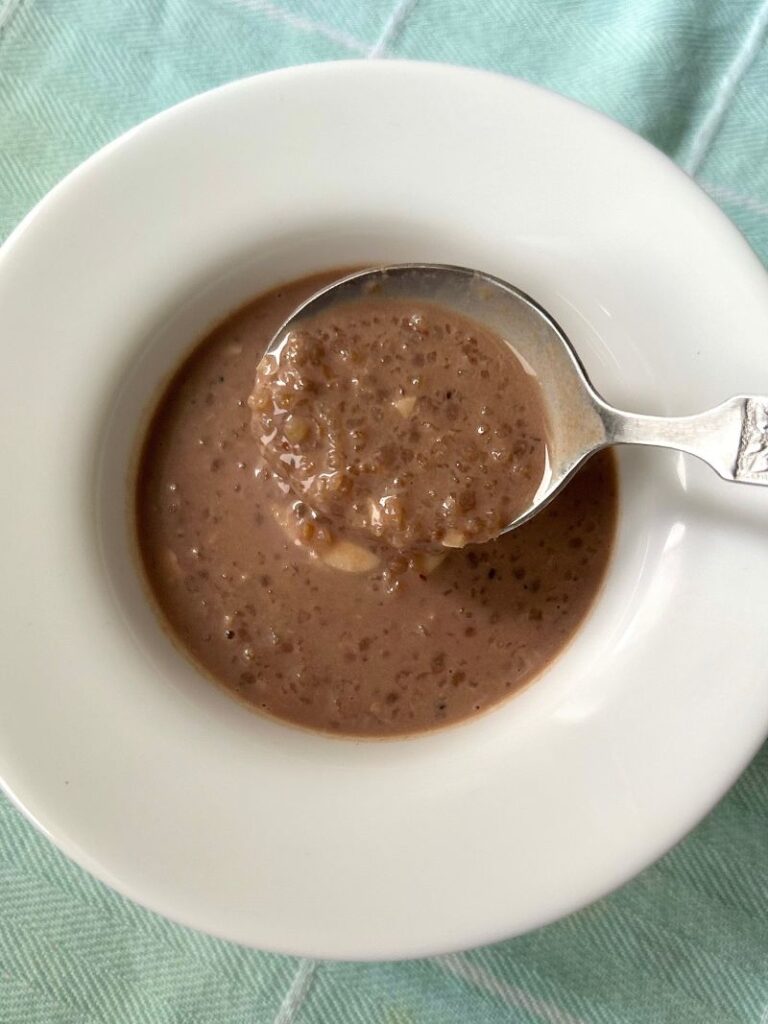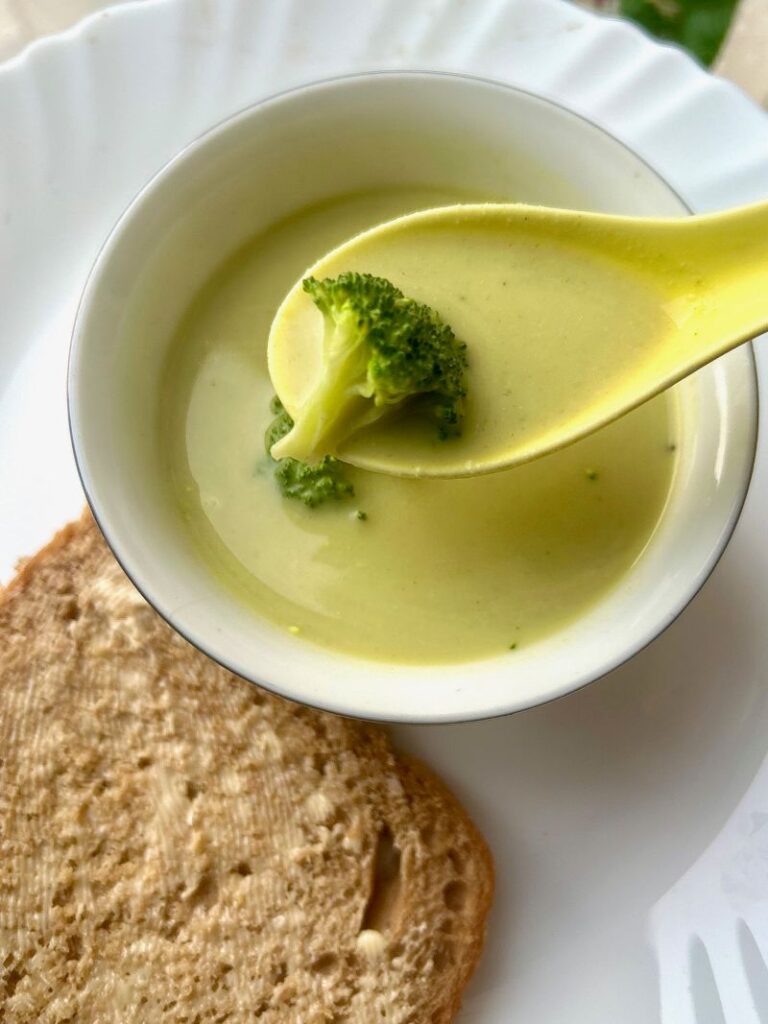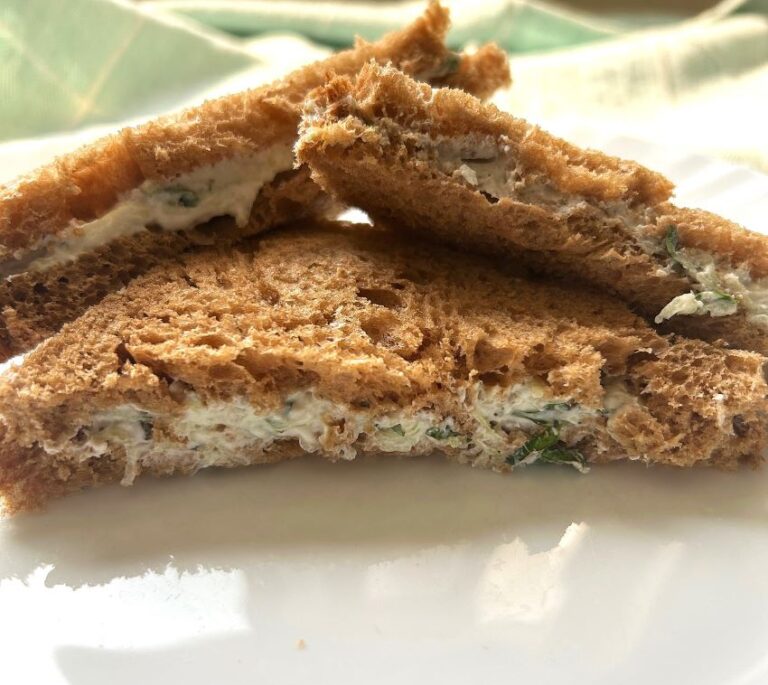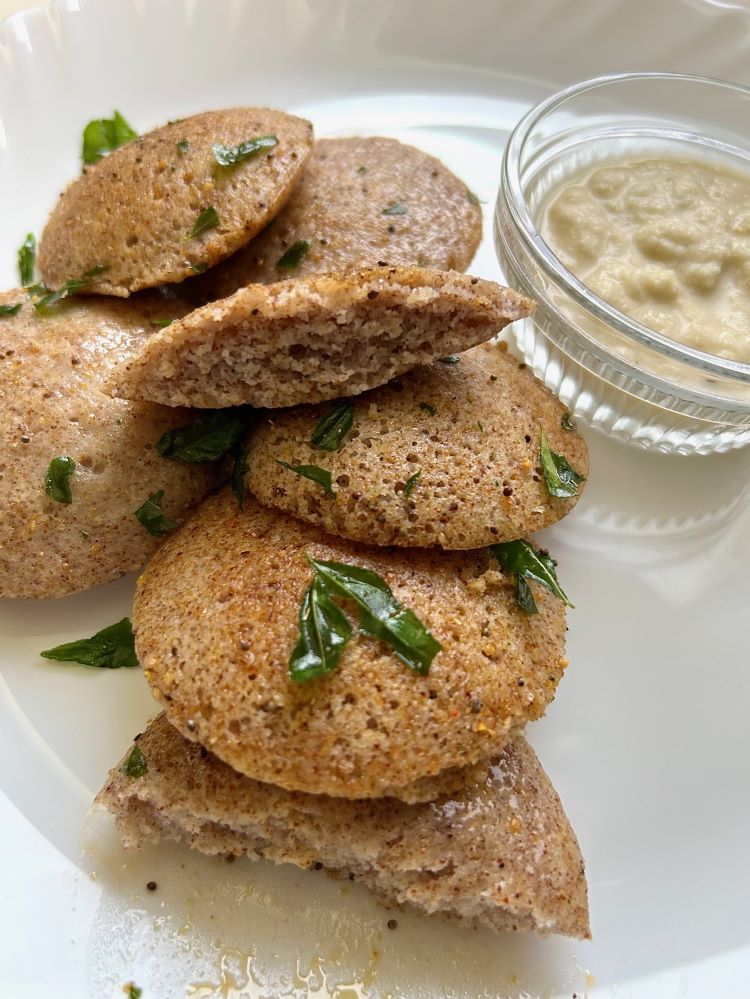Simple Carrot Puree for Baby Weaning
Learn the best way to make homemade nutritious carrot puree for your baby’s first stage food. Perfect for introducing solids safely.
Homemade Carrot puree is a simple recipe for an easy stage one food for 6 months and above. It is vibrant, fresh and packed with tons of nutrition for your little one.
I remember the first time when i gave this puree to my baby boy, he kept kicking in delight and opening his mouth for more.
Making Homemade Baby Food can be daunting for all new mothers. What to give, what is safe, what is least allergic? Even when you know all the fundamental rules, all of this can still be confusing because as a new mother we never stop doubting. While store bought purees can seem a convenient choice but serving your child jarred store-bought baby food with a shelf-life of 2 years which is literally older than your baby, is definitely not appealing.
To give your confusion a rest, refer to this – A Complete Guide for Your Baby’s First Food. You can find more interesting easy to make baby food recipes under Baby and Toddler Recipe Guide.
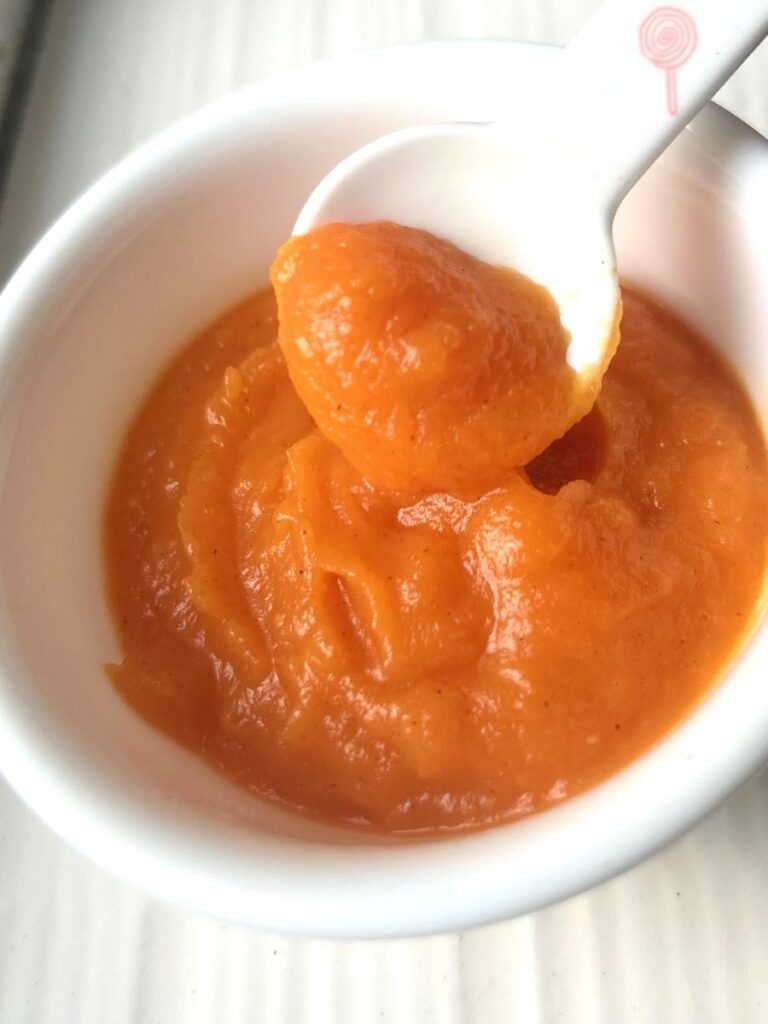
More About Carrot Puree
Carrots are the least allergic and are easily digested by a tiny tummy, hence making it an ideal first food. Carrot puree tastes naturally sweet but that also depends on the kind of carrots you are choosing. Always taste carrots before cooking and go for the sweet ones otherwise the puree can taste slightly bitter.
Use whole carrots. Just wash and peel them before cooking. Even if the carrots are organic or from your garden, I think it is important to peel them for babies to get rid of any dirt particle or pesticide residue. Also, removing the peels makes them taste better.
You can serve carrot puree as it is or deepen the flavour by adding spices like dry ginger powder, nutmeg, cinnamon or cumin. All these spices are a safe option for infants.
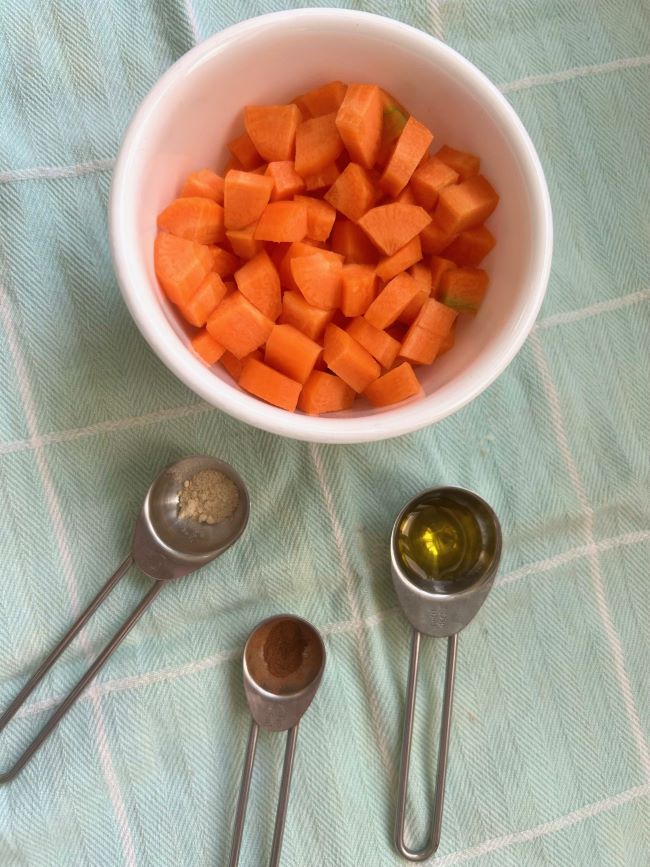
Get Maximum Nutrition From Carrots
Cooking Method
The best way to get maximum nutrition from carrots is by steaming them. While boiling is another method to cook carrots but boiling can leach out water-soluble vitamins and minerals into the cooking water. So, unless you are using all the cooking water in making the puree, I would suggest to prefer steaming over boiling. Baking carrots is another healthy option but again steaming tops the charts because it minimizes nutrient loss due to water and heat exposure. Baking on the other hand enhances the flavour but it can lead to nutrient loss especially if the cooking time is excessive.
Cooked vs Raw Carrots
Carrots are high on beta-carotene. Beta carotene is a provitamin that the body converts into vitamin A. This nutrient boosts hair growth, improves eye health, keeps heart and skin healthy and supports bone health. Beta- carotene is better absorbed by the body in the form of cooked carrots. Cooking can also improve the digestibility of carrots and make them more palatable for kids. You can always give your child raw carrot sticks as a munching snack but cooking carrots is a way better option for kids than having them raw.
Fat Soluble Vitamin
Vitamin A which is found in abundance in carrots is a fat soluble vitamin which means that the body absorbs and stores them in fat tissue or the liver. So, for better absorption of beta-carotene from carrots, it’s recommended to consume them with a source of fat, such as olive oil, butter or ghee. Due to this very reason we will too add some sort of fat in this recipe for better absoprtion.
Step by Step Instructions
For detailed recipe, please jump to the recipe card below
1. Peel and chop carrots roughly.
2. Cook the carrot chunks by steaming or boiling till they are tender. This will take approximately 10 minutes. I prefer steaming them. Refer Cooking Method above to know which method retains the maximum nutrition.
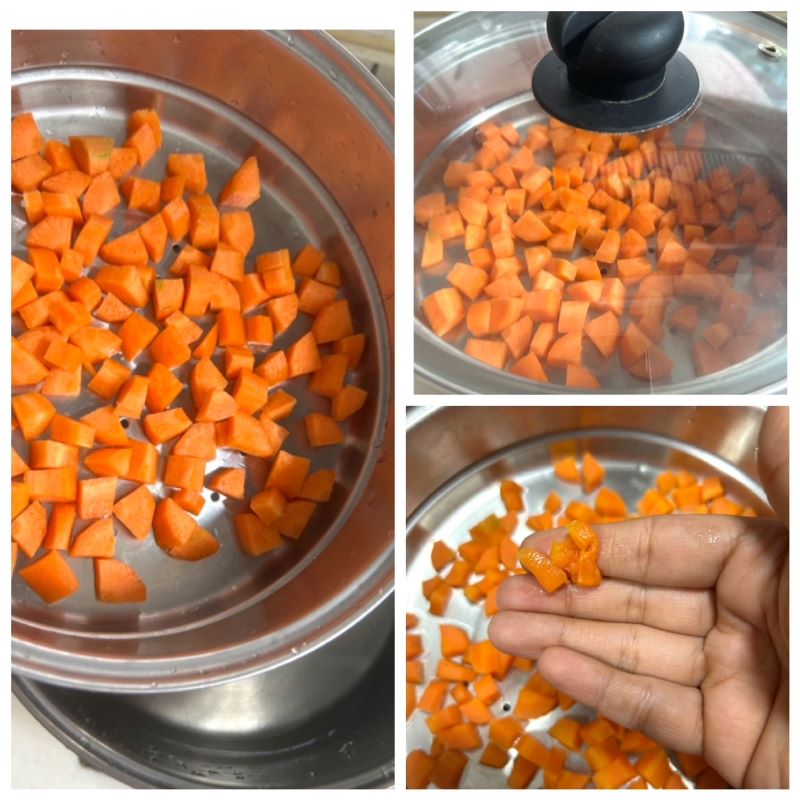
3. Transfer cooked carrots in a blender. Carrot puree can be a little thick for stage one food. To make a smooth thin puree, you can use liquid of your choice. This could be breastmilk, formula milk, sodium free chicken or vegetable stock or boiled carrot water if you choose to boil carrots and not steam. Blend till it becomes smooth and creamy.
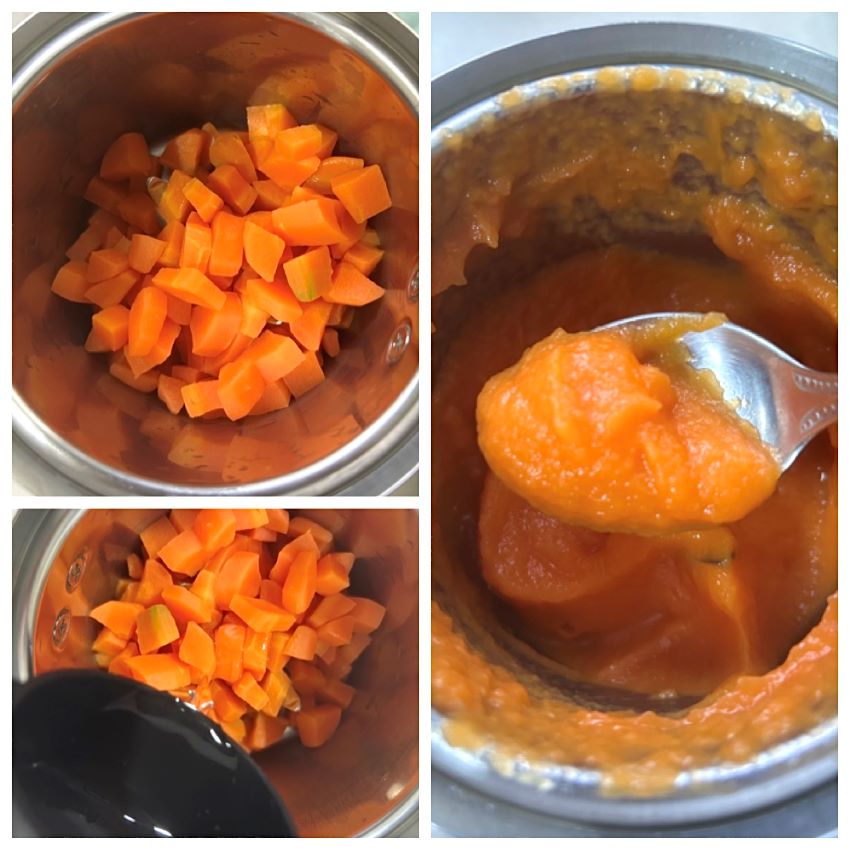
4. Transfer the puree to a bowl. You can serve the puree as it is or add spices like cinnamon, cumin, dry ginger powder. These spices are least allergic and are considered safe for babies. In this recipe, I have added cinnamon and dry ginger powder. I like it better with cinnamon than cumin.
5. Also add 1/2 tsp of extra virgin olive oil to the finished puree to add healthy fats. Refer Fat Soluble Vitamin above to know why you must add healthy fats to carrots.

6. Serve carrot puree cool or warm or portion into storage containers or ice cube trays for later use.
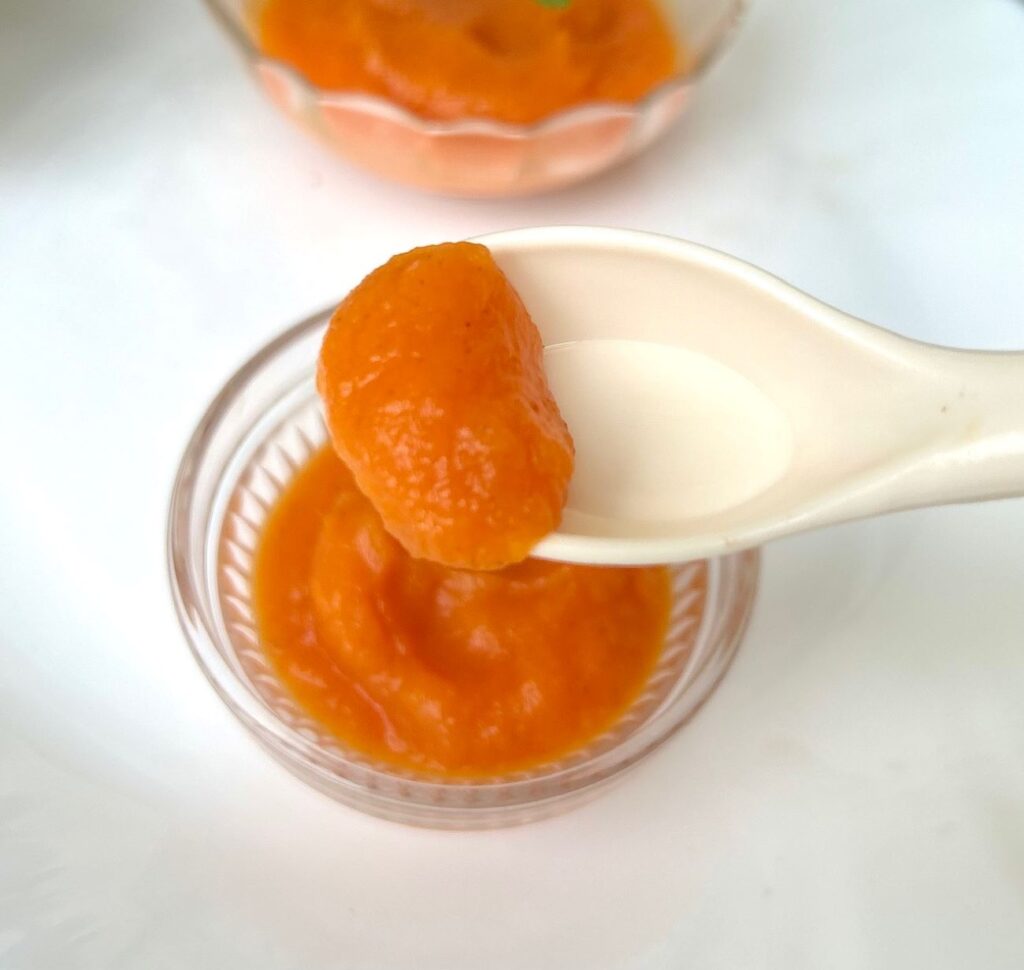
Storage Of Carrot Puree
You can store carrot puree in an airtight container in the fridge or freezer. It will last you 3 days in the refrigerator and about 2 months in freezer. To freeze it, you can portion the puree in ice cube tray overnight and the transfer the frozen cubes in a ziploc bag for long term storage. Do not forget to label the date on the container or ziploc bag for future reference.
Combination With Carrot Puree
While carrot puree is delicious on its own but once your child is used to solids and different textures, you can give different combinations of purees.
Here’s listing a few combinations that I have tried with carrot puree and were my child’s favourite:
- Pumpkin
- Applesauce
- Pear
- Rice
- Moong Dal (Yellow Split Lentil)
- Potatoes
- Sweet Potato
- Barley
- Boiled or Roasted Chicken
Simple Carrot Puree for Baby Weaning
Ingredients
- 2 medium Carrots
- 1/4 cup Liquid water, breastmilk, formula milk, sodium free vegetable or chicken stock
- 1/2 tsp Extra Virgin Olive Oil/Coconut Oil
- 1/8 tsp Cinnamon/Cumin/Dry Ginger Powder/Nutmeg optional
Instructions
- Peel and chop carrots roughly.
- Cook the carrot chunks by steaming or boiling till they are tender. This will take approximately 10 minutes. I prefer steaming them. Refer Cooking Method above to know which method retains the maximum nutrition.
- Transfer cooked carrots in a blender. Carrot puree can be a little thick for stage one food. To make a smooth thin puree, you can use liquid of your choice. This could be breastmilk, formula milk, sodium free chicken or vegetable stock or boiled carrot water.
- Transfer the puree to a bowl. You can serve the puree as it is or add spices like cinnamon, cumin, dry ginger powder. For this recipe, I have added cinnamon and dry ginger powder.
- Also add 1/2 tsp of extra virgin olive oil to the finished puree to add healthy fats. Refer Fat Soluble Vitamin above to know why you must add healthy fats to carrots.
- Serve carrot puree cool or warm or portion into storage containers or ice cube trays for later use.
Notes
- You can store carrot puree in an airtight container in the fridge or freezer. It will last you 3 days in the refrigerator and about 2 months in freezer.
- You can serve carrot puree as it is or deepen the flavour by adding spices like dry ginger powder, nutmeg, cinnamon or cumin.
- Stage one puree is thin. Make carrot puree thin by adding liquid of your choice. This could be breastmilk, formula milk, sodium free chicken or vegetable stock or boiled carrot water if you choose to boil carrots and not steam.
Give this homemade carrot puree a try for your little one and let me know how it went in the comments. I would love to hear your baby’s reaction! 🙂

